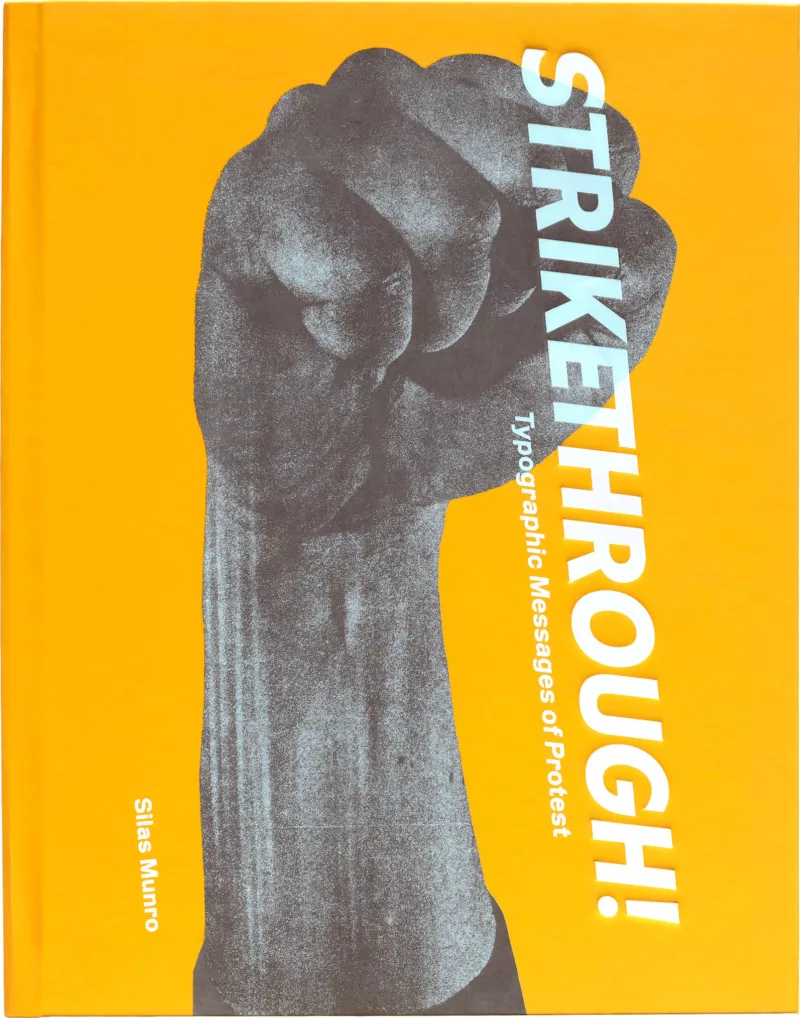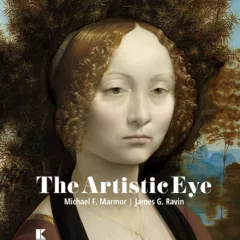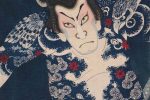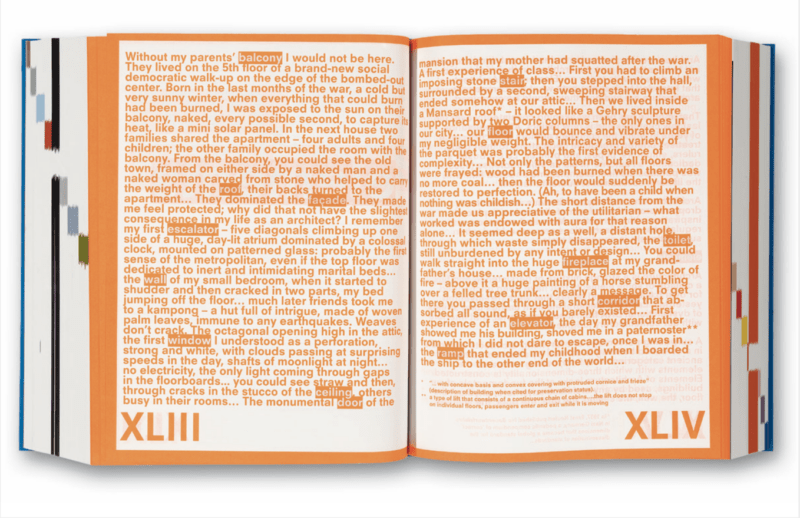
Irma Boom: Book Manifest; Books in reverse chronological order, 2022-1985, with comments here and there (Koenig Books, Cologne, 2023, third revised and expanded edition) ISBN 978-3-7533-0091-7
Artbook
Irma Boom is one of the great book designers of all times, and this compendium will delight everyone who loves books. It is 1000 pages and fits in the palm of your hand. No one understands better than Boom that books are physical objects that we not only see, but touch and hold – an experience that the digital world cannot match. This physically-condensed survey of her career — the third edition since 2010 (updated, with each version three percent larger than the last) is both modest and compelling in its diminutive dimensions. The designer explained her decision about the size: “The book is small because whenever I make a book I start by making a tiny one. …as filters for my ideas and to help me to see the structure clearly…I’ve always wanted to make one for publication, but no one has ever wanted to do it. And I thought, well, this time. I can.”
Boom discusses the time she spent in the Vatican Library studying the earliest printed books. Her approach is utterly unlike the scholarship usually applied to early printing. She looked at the books’ structure and the development of conventions such as paragraphs, page numbering, margins, placement of illustrations, commentaries and notes, covers, spines, stitching of leaves etc., and what they enabled in terms of how books were and are used. For Boom, format and content are indivisible. Book Manifest demonstrates how she pushed against expectations throughout her work, creating a singular oeuvre that has provoked both readers and other designers to re-think books and how we interact with them.
Strikethrough: Typographic Messages of Protest, by Silas Munroe, (Letterform Archive, San Francisco, 2022) ISBN 978-1-7368633-0-5
Letterform Archive Books
Strikethrough examines the intersection of late nineteenth through twenty-first century political opposition and graphic design. It follows protest slogans, handbills, magazines, posters and other ephemera through their visual development and production and into the streets where they were posted and carried, amplifying voices and providing lasting imagery of grass-roots political actions. The chaotic state of the post-Covid world continues to provoke international protests, making this book especially pertinent. It is full of stories which make for compelling reading.
The book includes illustrations and typographic designs by well-known artists and designers, including Emory Douglas, Corita Kent, Tibor Kalman and Ben Shahn, as well as the anonymous designer of the now-iconic placards (“I AM A MAN”) carried by Memphis sanitation workers in 1968, and others unknown. Designs include protests of slavery, racism, war, nuclear weapons, workers’ exploitation, women’s rights, financial inequality and gay rights. While the illustrated works emphasize the United States, with particular consideration of BIPOC and gay designers and subjects, they also include work from Mexico, Egypt, Brazil, France and elsewhere.
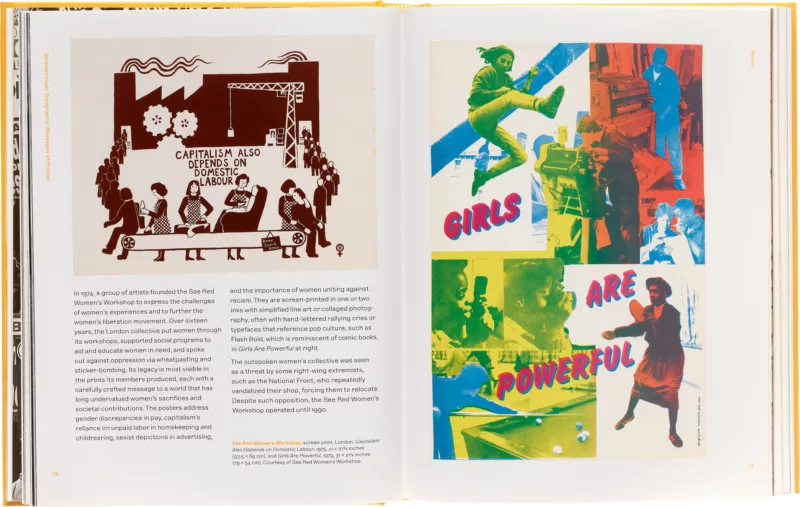
Strikethrough is published by the Letterform Archive,which describes itself as “a non-profit center for design inspiration,” with a collection “spanning the history of graphic design, type design, and lettering.” While the book covers specifics of typography and graphic design, it will appeal to anyone interested in the history of oppositional politics. It is beautifully written, produced and designed for clarity and impact, which suits its subject.

An Indigenous Present, Jeffrey Gibson and Jenelle Porter, eds. (BIG NDN Press and Del Monico Books with ARTBOOK/D.A.P., New York, 2023) ISBN 978-1-63681-102-4
Artbook/DAP
Anyone interested in contemporary art in the U.S. has been waiting for this book, whether they realize it or not. For too long the mainstream contemporary art world has largely ignored Native American artists. Jeffrey Gibson includes work by visual artists, musicians, poets, choreographers, designers, filmmakers performance artists, architects, collectives and writers. He doesn’t present a history or pretend to offer anything more systematic than work by close to fifty artists that matter to him; the emphasis is on individual artists and their work.The photographs alone will ensure that many readers will want to see more. Glorious color illustrations, in full-page and two-page spreads, eloquently make the case that a wealth of art exists that deserves to be known. The book is handsomely designed by OTAMI, and well produced.
“An Indigenous Present” was the product of significant collaboration between the editors and artists from multiple tribal nations in the U.S. and Canada. Gibson and co-editor Jenelle Porter spoke at length with each of the artists, to insure that their work represents their wishes, and the book includes short biographies for each of them. Essays situate the art within the history of attempts to eliminate indigenous cultural traditions and the distortions of anthropological representations. The writing includes poetry, a performance text, a conversation about the history of exhibitions curated by native Americans, and a philosophical exchange revealed by scholar Philip J. Deloria in an essay clearly not intended for academic publication.
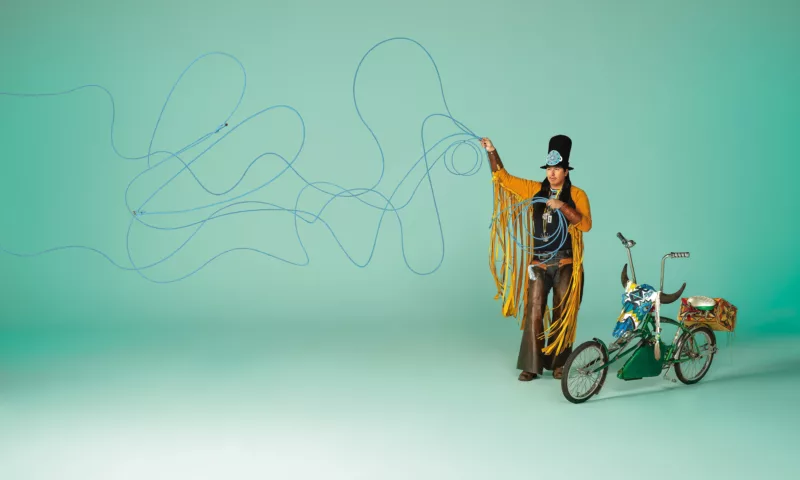
Without attempting to limit the work through characterization, Gibson does say that one through-line of his colleagues’ art is humor – often of a biting nature; in “Take a Picture with a Real Indian” (1991), James Luna offered to be photographed with museum visitors, either stripped to the waist and adorned with feathers and quills or in casual sportswear; designer Korina Emmerich produced an upcycled cotton shirt embroidered with the words “Discomfort is Progress” (2021); and the cover of New Red Order’s parody of the “New York Times Magazine” bears the headline “Tired of Living on Stolen Land? Give it Back” (“New Red Times Magazine” 2021).


